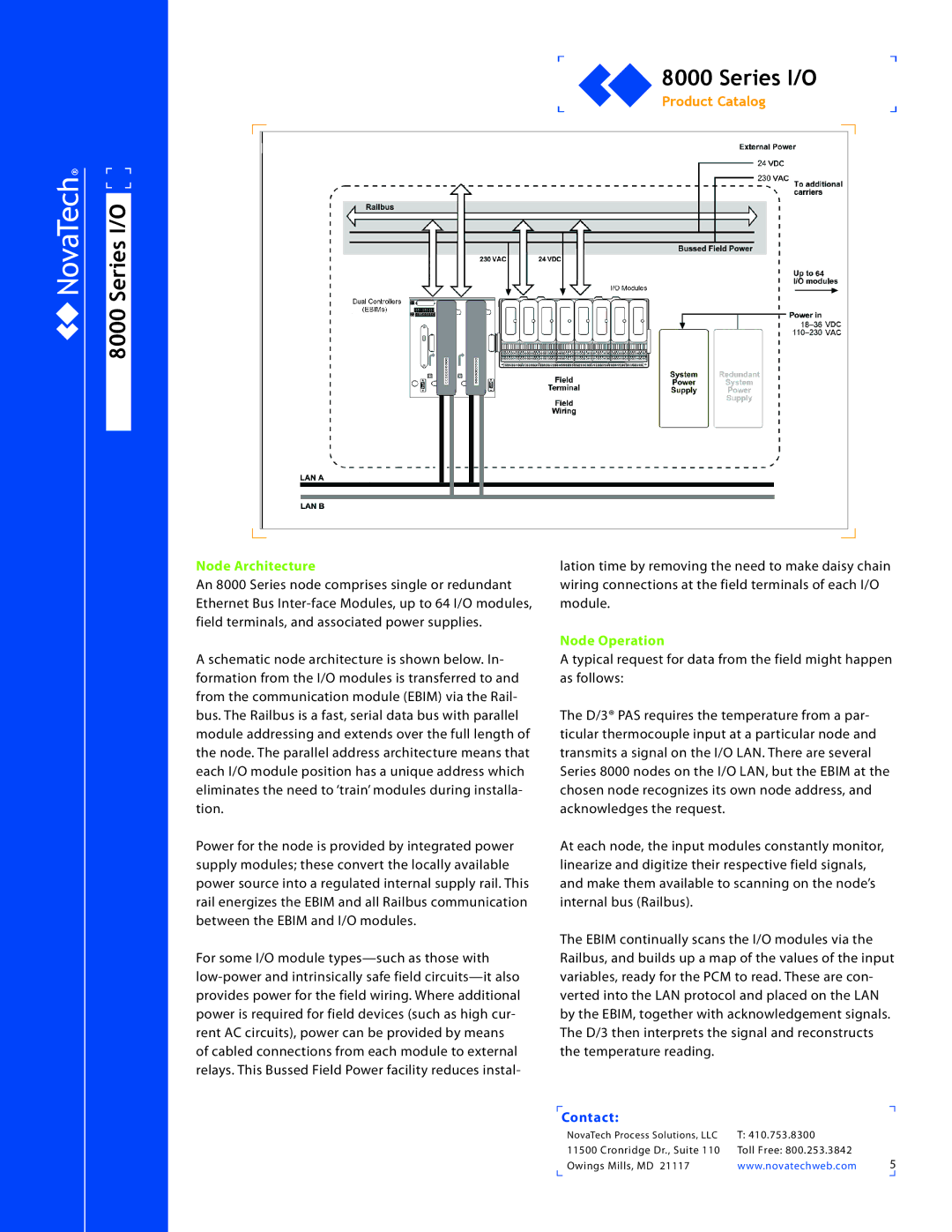8000SeriesI/O specifications
The NotaTech 8000 Series I/O is a cutting-edge technology designed to revolutionize industrial automation and process control systems. As industries increasingly seek to enhance productivity and efficiency, the 8000 Series I/O steps up by providing a robust and flexible interface to integrate various sensors, actuators, and controllers.One of the standout features of the NotaTech 8000 Series I/O is its modular design. This allows users to customize their I/O configuration according to the specific requirements of their applications. With a range of modules available, including digital, analog, and specialty I/O, users can easily scale their systems to meet evolving demands.
Another key characteristic of the 8000 Series I/O is its high-speed data communication capabilities. Utilizing advanced protocols such as EtherCAT, PROFINET, and Ethernet/IP, the system ensures rapid data transfer between devices, significantly reducing latency in control loops. This high-speed communication supports real-time performance, making it ideal for time-sensitive applications.
The NotaTech 8000 Series also boasts an impressive level of reliability and durability. Engineered for harsh industrial environments, the modules are built to withstand extreme temperatures, vibrations, and humidity. IP ratings ensure protection against dust and water ingress, contributing to prolonged operational life and minimal downtime.
Incorporating state-of-the-art diagnostics, the 8000 Series I/O provides comprehensive monitoring of system health. Users can access diagnostic data through user-friendly interfaces, allowing for proactive maintenance and troubleshooting. This feature not only reduces maintenance costs but also enhances the overall system reliability.
Another notable technology integrated into the NotaTech 8000 Series is its support for various fieldbus systems. With multi-protocol support, users can connect easily to existing infrastructure without the need for system overhauls. This flexibility promotes interoperability and eases upgrades as technology evolves.
Security is paramount in industrial environments, and the NotaTech 8000 Series I/O addresses this with built-in cybersecurity features. These include secure communication channels and access controls, safeguarding against potential cyber threats and ensuring data integrity.
In summary, the NotaTech 8000 Series I/O stands out in industrial automation for its modular adaptability, high-speed communication protocols, rugged design, advanced diagnostics, multi-protocol support, and a strong focus on cybersecurity. As industries continue to innovate and evolve, the 8000 Series I/O positions itself as a vital component in the quest for increased efficiency and reliability in automation systems.

